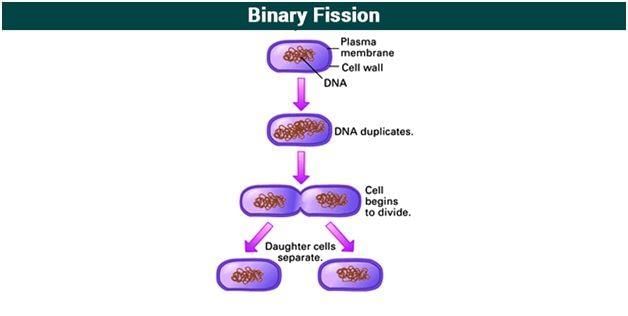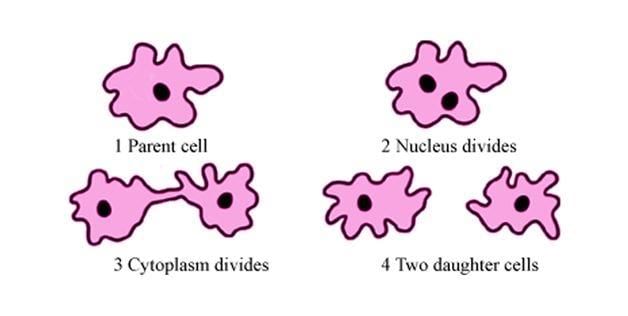Binary Fission - Class 12 PDF Download
Binary Fission
Binary fission is a type of asexual reproduction and the most common form of reproduction in prokaryotes and eukaryotes. It is a method of separating a body into two new bodies. In this, an organism duplicates its genetic material and divides into two parts where every new organism receives one copy of DNA.
It is a primary method of reproduction in prokaryotic organisms. Fission occurs without any spindle apparatus formation in the cell. Here, the single DNA molecule replicates first and then attaches each copy to the cell membrane’s different part. When the cell started to pulls apart, the original and replicated chromosomes get separated. This asexual process of reproduction has a consequence that all the cells are identical genetically which means that they follow the same genetic identities.

Binary Fission in Bacteria
The Process of Binary Fission involves some steps:-
Step 1- The bacterium cell firstly copy its DNA which is tightly coiled, so that the new cells will have DNA. This DNA includes all the information of the bacterium that needs an organism to survive. Therefore, it is important to copy it.
Step 2- After copying the DNA structure, the bacterium starts to grow larger. Increase in size will allow some separation between the two duplicated chromosomes, attached to the plasma membrane and are present inside the cell.
Step 3- The distance created between two Chromosomes finally forms the division in the middle of the bacterium. And, eventually this division completely divides the bacterium in two half’s. This whole process is known as cytokineses.
Step 4- The two divided cell will now be called as daughter cell. Binary fission leads to develop two identical daughter cells.
Binary Fission in Amoeba
Amoeba is a shapeless and small unicellular organism that has a Cell Membrane which includes cell organelles and cytoplasm. Amoeba also reproduce with the most common asexual process known as binary fission.

After replicating its genetic material through mitotic division, the cell divides into two equal sized daughter cells. In this method, two similar individuals are produced from a single parent cell. As mature amoeba is large in size, its nucleus extends and gradually divides into two. The division of cytoplasm follows the division of nucleus. So, two amoeba are produced from a single parent and parent’s identity is lost.
Bacterial Fission
The process of Binary fission is usually rapid and its speed varies from species to species. These cells generally divide after 20 minutes at 37 degree C. The newly developed cells will undergo this process on their own and the time this method needs is the time that the bacterial culture needs to double in the number of cells it has. This time period can be considered as the doubling time. There are some species having faster doubling times and one of them are strains of mycobacterium tuberculosis which have doubling time of 100 hours. An increase in bacterial growth is restricted by various factors that includes nutrient availability and space available, so this process of binary fission takes place at much lower rates once they get into the stationary growth phase














